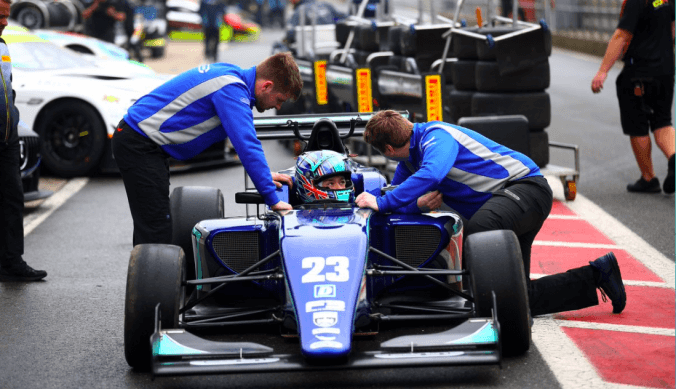Ailsa Harvey
Motor racing has a variety of categories, including Formula, sports car, stock car, and off-road racing to name just a few. While each has their differences, the high speeds and competitive aspects of these adrenaline-packed races all create a similar buzz, which many competitors live for.
The sport has existed ever since cars were invented, with races recorded as early 1867: these competitions began as reliability trials for new cars, to prove that they were suitable modes of transport. By the 1930s, cars specifically designed for racing had developed.
Formula One (single-seater) cars are the fastest regulated road course racing cars in the world, due to huge aerodynamic downforce. When driven at their quickest, these models can reach 235mph. Although in races, the technicalities and turns of the course do not allow for such speeds to be performed, it goes without saying that there is incredible danger associated in the world of motor racing. It is this aspect which gives many the thrill and a drive to be skilled in the technicalities of the sport.
Someone who knows too well how dangerous motor racing can be is nineteen-year-old British racer, Billy Monger.
In April 2017, Billy- also known as ‘Billy Whizz’, raced in the Formula 4 British Championship at Donington Park. During the chaotic race, he crashed into a stationary car on the track, which he was unable to see from his position. Colliding into the back of the vehicle at 120mph, the result was devastating. Having been in a coma for three days, Billy awoke with both his legs amputated.
His love for the sport is a deep-rooted passion, and Billy does not let this event prevent him from pursuing his racing dreams. Determined to get back behind the wheel, he was faced to confront the regulations regarding disability in the sport. Would he be able to start racing again as a double amputee?
Last year, no disabled driver had ever driven a single-seat racing car professionally before. The governing body, the Federation Internationale de l’Automobile (FIA), had stated in their regulations that disabled racers couldn’t compete in these cars for safety reasons.
Nonetheless, Billy learned how to drive a car which was specially adapted to enable him to use just his hands for the majority of controls. Using a simulator at Carlin Motorsport, Billy mastered this new skill and was ready to race again. All that he needed now was the approval from the sport’s governing body.
In December 2017, the FIA declared that they had ruled in Billy’s favour and disabled drivers were given the right to obtain a licence for single-seater cars. The federation had begun looking into this rule in the months just before his accident, and the news had come in time to provide Billy with new aspirations for his racing future.
In March, Billy Monger raced against able-bodied racers in his first race since the crash and gained a place on the podium, coming in at 3rd. The Formula Three race was the first of the championship and the first of a new chapter in his racing career.
New opportunities in disabled motor racing has opened doors for many other disabled hopefuls.
Did you know…
- Open-wheel (or single-seater) racing involves cars where the wheels are not covered, such as Formula cars.
- Nathalie McGloin is a female racing driver who is paralysed from the chest down. As a racer in the Porsche Club Championship, she competes against able bodied men. An inspiration to many disabled racers, Nathalie has set up a charity called Spinal Track. This gives other disabled drivers the opportunity to experience driving the specially adapted cars.
- In the early motor racing competitions, the average speed of the races was 10-20 mph. Today, many open-wheel races see average speeds of over 100mph.
What do you think of FIA’s new regulations? Let us know by commenting on this post.





Leave a Reply